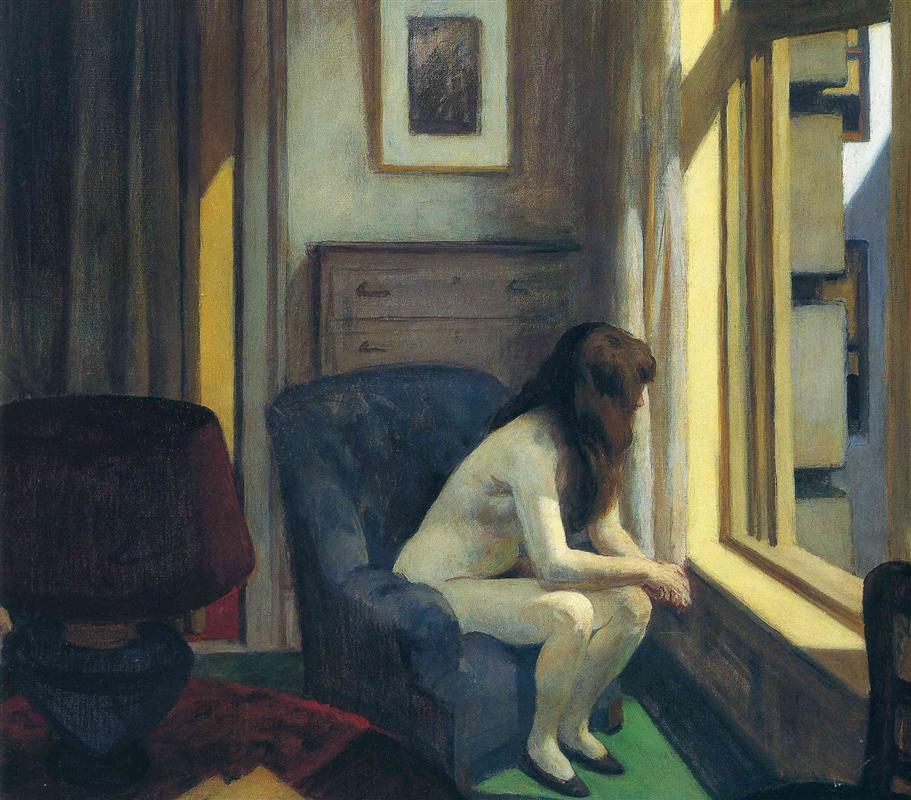We’re away until January 2, but we’re reposting some of our favorite pieces from 2018. Enjoy your holiday!
Josephine Nivison Hopper
Chez Hopper
oil on canvas
In a 1906 portrait of Josephine Nivison, painted while she was a twenty-two-year-old student at the New York School of Art, her artist’s smock slips from her shoulder like the falling strap of Madame X’s gown. This is teacher Robert Henri’s portrait of the artist as a young woman; one suggestive detail, sure, along with aspects of Jo’s character he can’t help but capture: her steady gaze of steely resolve, the way she holds her brushes like a divining rod.
This is when Jo Nivison meets Edward Hopper, though they do not make much of their first meeting, or even their second. When they graduate, Jo keeps herself in cigarettes by selling drawings to places like the New York Tribune, the Evening Post, the Chicago Herald Examiner. In the 1920 New York City Directory, Jo lists herself as an artist, and she is no slouch. She shows her paintings alongside work by Picasso and Man Ray. In that same directory, Edward Hopper calls himself an illustrator.
from The Paris Review http://bit.ly/2Rqquh7

Comments
Post a Comment